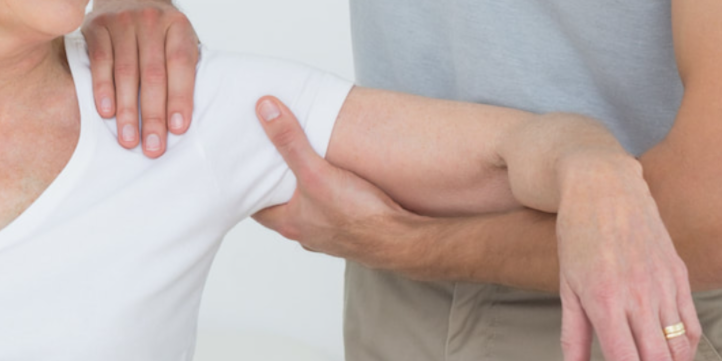
How to treat AC joint shoulder injuries
The acromioclavicular (AC) joint is formed by the cap of the shoulder (acromion), the collar bone (clavicle) and is held together by strong ligaments. The AC joint is strong, but its location makes it vulnerable to injury from direct trauma.
Injury to the ligaments (also called shoulder separation) can occur as a result of a fall, direct blow, or other trauma.
What are the symptoms of an AC injury?
Typically an AC injury will cause tenderness directly over your AC joint and a possible deformity towards the top of your shoulder, but symptoms can vary greatly depending on the extent of your injury.
How are AC injuries diagnosed?
In most cases, the diagnosis of an AC joint injury can be made by a sports specialist physiotherapist without difficulty based upon your history of direct shoulder trauma and examination findings consistent with AC injury.
Because injury to the AC joint usually occurs from direct trauma to the superior or lateral aspect of the shoulder, your physio will ask questions about the how you caused your injury and about any shoulder injuries or pain you may have had previously.
Severe shoulder trauma that damages the AC joint may simultaneously cause other shoulder injuries, such as subluxation or instability of the glenohumeral joint or damage to the rotator cuff.
How is an AC joint injury treated?
Initial treatment of an AC joint injury should consist of:
- Rest,
- Ice,
- Protection using a sling if needed
How are AC injuries graded?
AC joint Injuries are classified and labelled as a type I, II, III, IV, V, or VI, depending upon the extent of injury and number of ligaments involved.
Type I injuries involve a sprain or partial tear of AC ligaments with no injury to other ligaments. Type I injuries are treated well with rest, ice, and protection, often with an arm sling. Ice should be applied for no longer than 15 minutes at a time every four to six hours as needed. Rest includes avoiding overhead reaching, reaching across the chest, lifting, leaning on the elbows, and sleeping directly on the shoulder.
Most patients return to normal activities between a few days days and two weeks following injury, although throwing and overhead athletes (eg, cricket, tennis, and volleyball players) may require two to six weeks of progressive rehabilitation before they can return to high level overhead activity.
Type I injuries generally heal without deformity and there is no increased risk of reinjury once completely healed.
Type II injuries usually cause greater pain and swelling than Type I and involve a complete tear of the AC ligaments and a sprain or partial tear of the coracoclavicular (CC) ligaments. In addition to ice and pain relief, initial management often includes three to seven days of immobilization in a sling. Otherwise, management is similar to that for Type I injuries.
Type III injuries involve a complete tear of both the AC and CC ligaments, leaving the AC joint slightly deformed and likely very swollen. People with type III injuries have significant tenderness of the CC ligaments, and often take sometimes several weeks to months to heal fully.
For Type II and Type III injuries, the risk of reinjury is increased until the ligaments have fully remodelled, which may require 6 to 10 weeks. Therefore, any exercises performed prior to complete healing must be performed cautiously.
Type IV, V, VI injuries are the most severe. Treatment often requires surgery.
Range-of-motion exercises for AC injuries
Rehabilitation of an AC injury usually consists of basic motion and strengthening exercises for the shoulder and scapular stabilizers.
Your physio will likely recommend range-of-motion exercises early in your recovery period depending on the severity of your injury. These exercises help maintain joint mobility and flexibility of the muscles and tendons in the shoulder Anyone who feels sharp or tearing pain while stretching should stop exercising immediately and consult with their physio or doctor.
If you’ve got questions about any type of shoulder injury, Sports physios are experts to speak with. At Lane Cove Physio, we also understand the value of patient education in getting you back to what you were doing before the pain. Whether you have shoulder surgery coming up, just had it, or contemplating surgery for a shoulder injury get in touch with us on (02) 9428 5772 or send us an email at [email protected] – don’t wait until the pain becomes severe or chronic.



